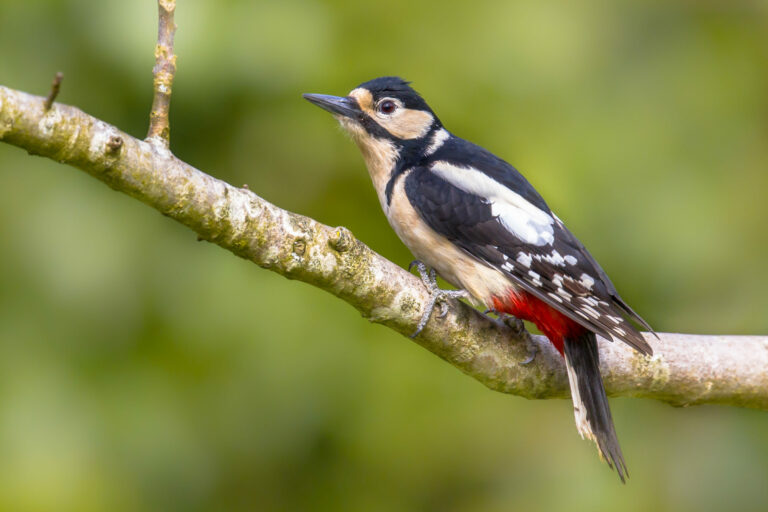Dendrocopos major

The great spotted woodpecker, also known as the buntspecht, is the most common and widely distributed woodpecker species in Europe. It inhabits deciduous and coniferous forests, as well as gardens with trees, and reaches a body length of up to 23 cm (Peterson et al. 1993). Its plumage on the back is predominantly black with white markings, while the cheeks are pale with a black bar. The belly and undertail coverts are red in color. Dendrocopos major nests in self-excavated tree cavities (Schaefer 2018).
Diet: Dendrocopos major feeds on insects and their larvae, seeds and fruits of various plants, and also utilizes human-provided food, such as suet balls in winter. It is also known to prey on nestlings and eggs of other bird species (Löhrl 1972).
Threat status: The great spotted woodpecker is listed as “least concern” both in the IUCN Red List of Threatened Species and the Red List of Germany.
-
Löhrl, H (1972)Zum Nahrungserwerb beim Buntspecht (Dendrocopos major). In: Ornithol. Anz. (11).
-
Peterson, R et al. (1993)A Field Guide to the Birds of Britain and Europe: Houghton Mifflin Harcourt.
-
Schaefer, M (2018)Brohmer – Fauna von Deutschland. Ein Bestimmungsbuch unserer heimischen Tierwelt: Quelle & Meyer Verlag GmbH & Co.